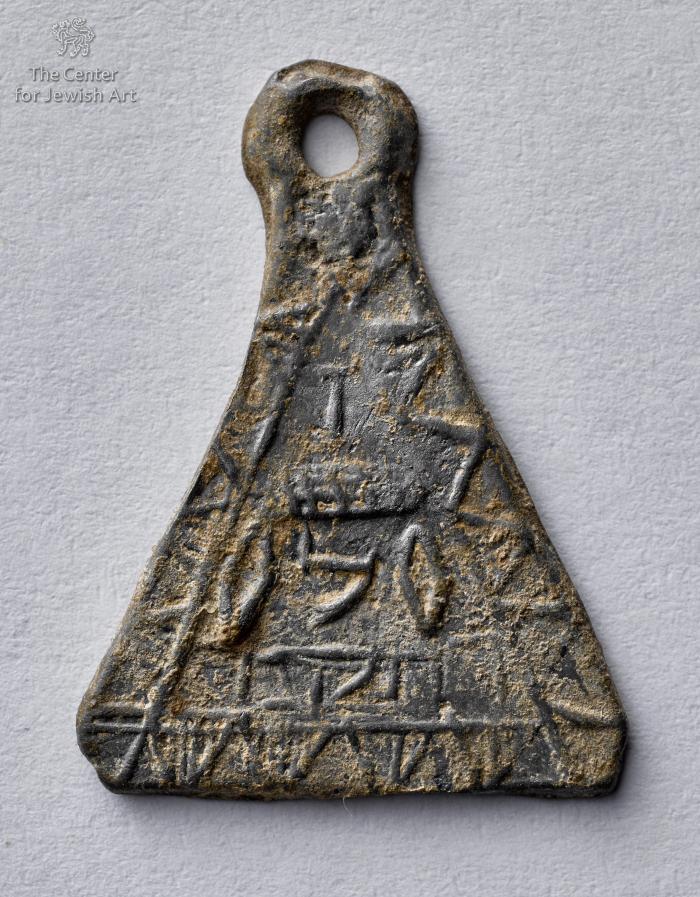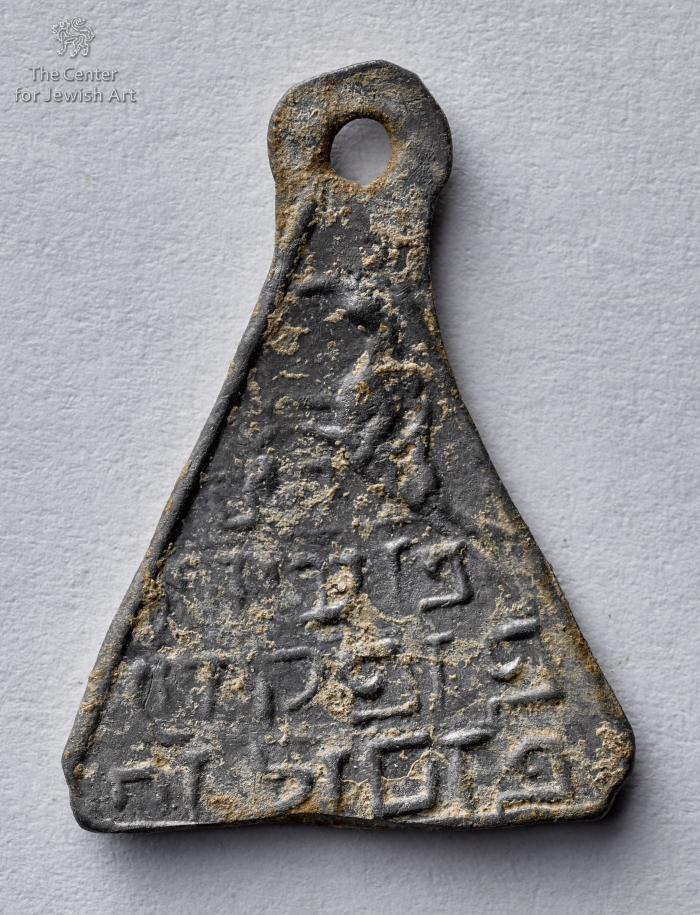Obj. ID: 37496 Amulet, Ukraine, circa 1900

sub-set tree:
The following description was prepared by William Gross:
This is an example of a type of inexpensive, easily cast lead amulet that has only recently come to light. The disovery came because of extensive use of metal detectors by amateur explorers in the FSU, primarily in the Ukraine, where such amulets have been uncovered in both quantity and variety. In the Gross Family Collection there are more than 60 different variations. It is clear that they were a very popular protective talisman, worn by numberous Jewish children.
This is a triangular "Heh' type amulet created for a male child to be hung around his neck on a string or chain. It has been postulated that this amulet was connected with the protection of a child for whom the Pidyon Haben ceremony could not be performed on time. In the center of the obverse is the single letter "Heh" of the monogrammaton. Above, within and below the "Heh" are Hebrew letters. There are also Hebrew letters on the reverse. In both cases the meaning of these letters is not clearl. This is the rarest shape shape among the dozens of lead amulets from East Europe that are in the Gross Family Collection.



